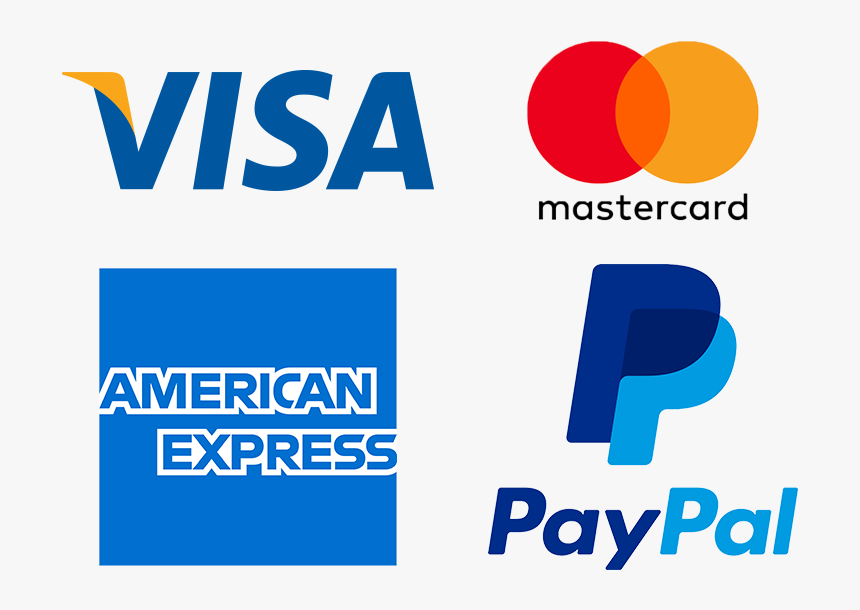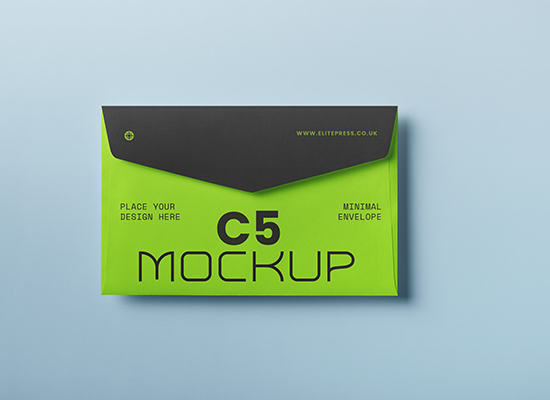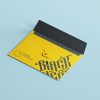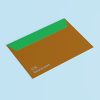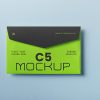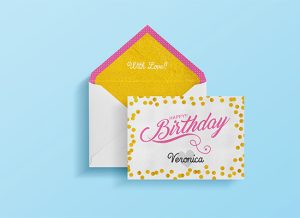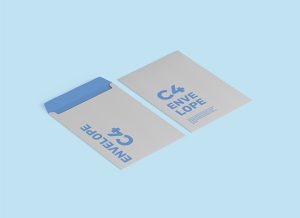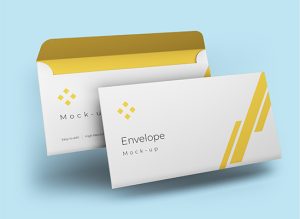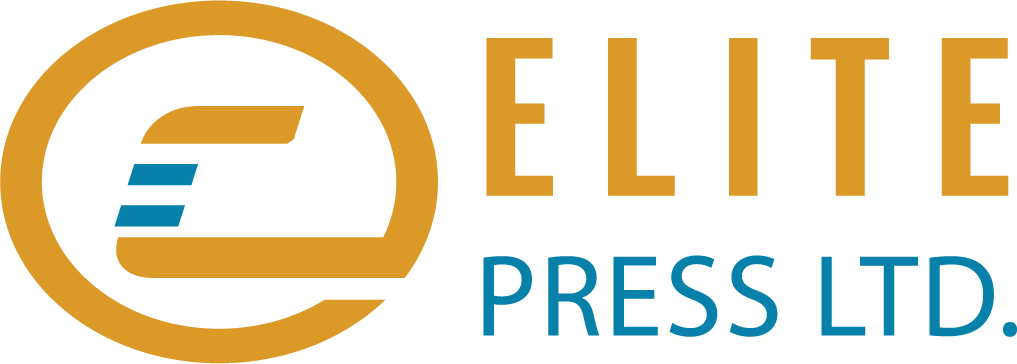Related Products
Additional Information
Create C5 envelope for a versatile, professional mailing solution. Ideal for sending A5 documents, brochures, and small presentations with ease.
C5 Envelopes: A Complete Guide
C5 envelopes are a popular choice for mailing documents, cards, brochures, and other materials that require a slightly larger envelope. Measuring 162 mm x 229 mm (6.4 inches x 9 inches), the C5 envelope is part of the ISO 269 international standard envelope series, specifically designed to fit A5 paper or an A4 sheet folded in half. Their versatility, moderate size, and professional appearance make C5 envelopes a widely used option in both personal and business correspondence.
In this comprehensive guide, we’ll explore the dimensions, uses, styles, and advantages of C5 envelopes, as well as factors to consider when choosing this envelope size.
Dimensions of C5 Envelopes
The C5 envelope is designed to fit specific paper sizes:
- A5 paper: C5 can comfortably fit an A5 sheet (148 mm x 210 mm) without folding, making them ideal for smaller documents, certificates, or personalized cards.
- A4 paper: An A4 sheet (210 mm x 297 mm) folded in half fits perfectly inside a C5 envelope. This makes C5 a convenient choice for sending letters, brochures, or marketing materials printed on A4 paper.
Common Uses of C5 Envelopes
C5 envelopes are highly versatile and can be used in various situations for both personal and professional correspondence. Below are some common uses:
- Business Correspondence: C5 envelopes are widely used in professional settings for sending letters, invoices, contracts, and other formal documents. They are an ideal size for holding A4 paper folded in half, which is a common format for business communication.
- Direct Mail Marketing: Companies often use C5 envelopes for direct mail campaigns. This size is large enough to accommodate marketing materials such as brochures, flyers, or promotional postcards, while still being compact enough to keep postage costs reasonable.
- Invitations and Greeting Cards: C5 are a popular choice for sending invitations to weddings, corporate events, or parties. They are also frequently used for greeting cards, especially when paired with a folded A4 or A5 card.
- Certificates and Awards: The C5 size is commonly used for mailing certificates, diplomas, awards, or any document that needs to be presented without being folded. The envelope protects the content while maintaining a professional appearance.
- Resumes and Cover Letters: When sending a printed resume and cover letter for job applications, a C5 envelope is a professional option. It can accommodate an A4 sheet neatly folded in half, ensuring that the documents are protected and presented in an organized manner.
- Holiday Cards and Invitations: For holidays, birthdays, and special occasions, C5 envelopes are often chosen to send customized cards or invitations. Their moderate size allows for creative and stylish stationery designs that are easy to post and appealing to recipients.
Materials and Styles of C5 Envelopes
C5 envelopes come in a variety of materials and finishes, catering to different needs and occasions. Here are the most common materials and design features available:
- Materials:
- Standard Paper: Most C5 envelopes are made from standard paper, which ranges in thickness from 80 to 120 gsm (grams per square meter). This weight is ideal for everyday use, offering a balance between durability and affordability.
- Luxury Paper: For more premium uses, such as formal invitations or corporate correspondence, C5 envelopes can be made from luxury or heavyweight paper, often ranging from 120 gsm to 180 gsm. These envelopes tend to have a more polished and high-quality appearance.
- Recycled Paper: For environmentally conscious consumers or businesses, recycled paper C5 envelopes are available. These envelopes are made from post-consumer waste paper and offer a sustainable option without compromising on quality or durability.
- Colors and Designs:
- White and Cream: The most common colors for C5 envelopes are white and cream, offering a clean, professional look suitable for almost any occasion.
- Colored Envelopes: C5 are available in a wide range of colors to suit different themes or branding needs. Colored envelopes are often used for invitations or marketing campaigns where the envelope itself is part of the visual impact.
- Textured Envelopes: Some C5 feature a textured surface, adding a tactile element to the recipient’s experience. Textured envelopes are commonly used for formal invitations or high-end stationery.
- Finishes:
- Matte: Matte finishes are widely used for professional or understated designs, providing a smooth, non-reflective surface.
- Glossy: Glossy C5 have a shiny finish that can make an envelope stand out. These are often used for special occasions or marketing purposes, where a high-impact look is desired.
- Metallic: Metallic C5 envelopes are used for luxurious invitations or high-end mailings. Available in gold, silver, or other metallic colors, these envelopes add a special touch to formal events like weddings or award ceremonies.
- Window vs. Non-Window:
- Window Envelopes: C5 window envelopes have a transparent window on the front, allowing the recipient’s address to be displayed directly from the letter or document inside. These are commonly used in business for sending invoices, bills, or official correspondence.
- Non-Window Envelopes: Non-window C5 envelopes are completely sealed, making them ideal for more personal or confidential documents. They can also be used for invitations or marketing materials where branding is printed directly on the envelope.
Seal Types for C5 Envelopes
There are several types of seals available for C5 envelopes, depending on the user’s preference and the nature of the correspondence:
- Gummed Flap: The traditional gummed flap requires moistening (usually by licking or using a damp sponge) to activate the adhesive. This type of seal is commonly used in everyday business and personal correspondence.
- Self-Seal or Peel-and-Seal: C5 self-seal envelopes have a strip of adhesive covered by a protective paper strip. To seal, the user simply peels off the strip and presses the flap down. This type of seal is particularly popular for bulk mailings, as it saves time compared to the traditional gummed flap.
- Press-Seal or Tape Seal: Press-seal envelopes are pre-glued, and the user simply needs to press the flap to the envelope body to seal it. This option is less messy than gummed flaps and is commonly used for quick and easy mailing.
Advantages of C5 Envelopes
- Versatility: One of the key advantages of C5 envelopes is their versatility. They can accommodate both A5 paper without folding and A4 paper folded in half, making them suitable for a wide range of correspondence, from business letters to invitations and marketing materials.
- Professional Appearance: C5 envelopes offer a neat and professional appearance, especially when used for business correspondence. Their size allows for formal letters to be folded neatly and presented in a tidy, organized manner.
- Cost-Effective Postage: C5 envelopes are typically cost-effective for mailing, as they are large enough to hold substantial content while remaining small enough to qualify for standard letter postage rates. This is particularly important for businesses that send large volumes of mail.
- Customization Options: C5 envelopes are easily customizable with logos, branding, or personal designs, making them ideal for businesses looking to maintain a consistent brand image across their correspondence. They can also be personalized for special occasions, such as weddings or corporate events.
- Protection for Documents: The moderate size of C5 envelopes means they offer good protection for documents, certificates, and marketing materials. The contents are less likely to be bent or damaged in transit compared to smaller or thinner envelopes.
Considerations When Using C5 Envelopes
- Limited Capacity: While C5 envelopes are versatile, their capacity is limited when it comes to bulky or multi-page documents. For larger reports or booklets, a C4 envelope may be more appropriate.
- Not Suitable for Full-Size A4 Documents: If you need to send an A4 sheet without folding, the C5 is not suitable. In such cases, a larger envelope like C4 would be necessary to ensure the document remains flat.
- Potential for Higher Postage Costs with Heavier Materials: If you’re sending multiple pages or heavier materials like brochures, C5 can sometimes push the mailing weight above the standard postage limit, leading to higher shipping costs.
Conclusion
C5 envelopes are a versatile, professional, and practical choice for both personal and business correspondence. Their moderate size makes them ideal for sending A4 documents folded in half, A5 paper, greeting cards, invitations, and certificates. Available in a wide range of materials, colors, and finishes, C5 offer numerous customization options, making them a perfect choice for formal events, marketing campaigns, and everyday office use. With the right selection of material and sealing options, C5 envelopes can enhance the presentation and professionalism of any mailing project.
Get Your Quote
My Account
About Us
Our Products
Contact
Follow Us On
We Accept
